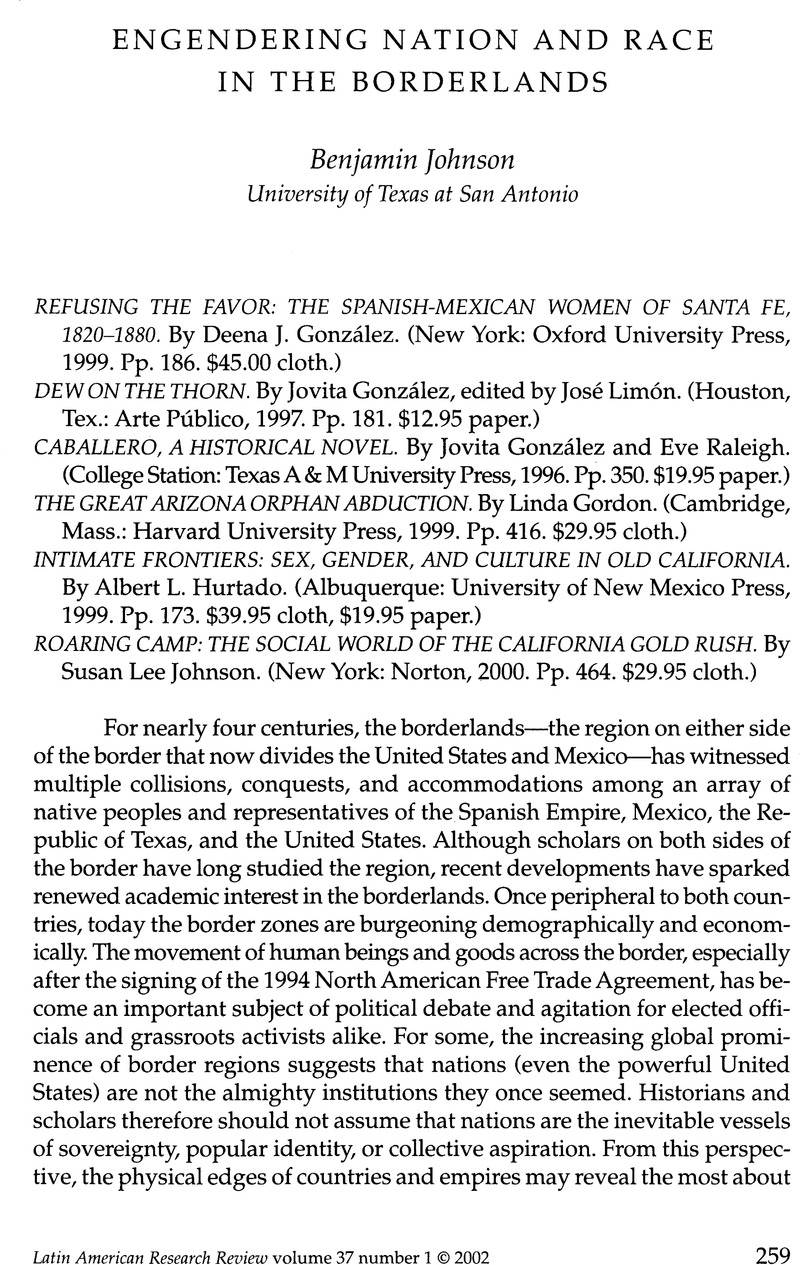Published online by Cambridge University Press: 05 October 2022

1. For recent discussions of borderlands and transnational history, see Jeremy Adelman and Stephen Aron, “From Borderlands to Borders: Empires, Nation-States, and the Peoples in Between in North American History,” American Historical Review 104, no. 3 (June 1999):813–841; the responses to it in American Historical Review 104, no. 4 (Oct. 1999):1221–39; and David Thelen, “The Nation and Beyond: Transnational Perspectives on United States History,” Journal of American History 86, no. 3:965–75.
2. The term ethnic Mexican refers to all people of Mexican descent, whether recent immigrants to the United States, well-established residents, or those of unclear background.
3. See John Mack Faragher, “The Custom of the Country: Cross-Cultural Marriage in the Far Western Fur Trade,” in Western Women: Their Lands, Their Lives, edited by Lillian Schlissel, Vicki Ruiz, and Janice Monk (Albuquerque: University of New Mexico Press, 1988), 199–215; Sylvia Van Kirk, “Many Tender Ties”: Women in Fur-Trade Society in Western Canada, 1670–1870 (Winnipeg, Manitoba: Watson and Dwyer, 1980); and David Montejano, Anglos and Mexicans in the Making of Texas, 1836–1986 (Austin: University of Texas Press, 1986).
4. Jovita González, “Social Life in Cameron, Starr, and Zapata Counties,” M.A. thesis, University of Texas at Austin, 1930; and Montejano, Anglos and Mexicans, 36, 79, 155, 248.